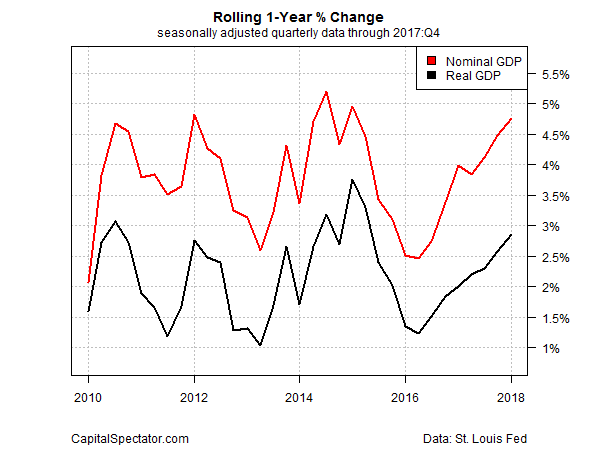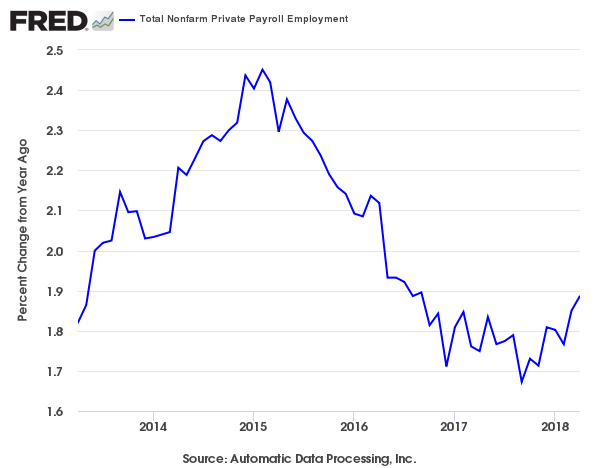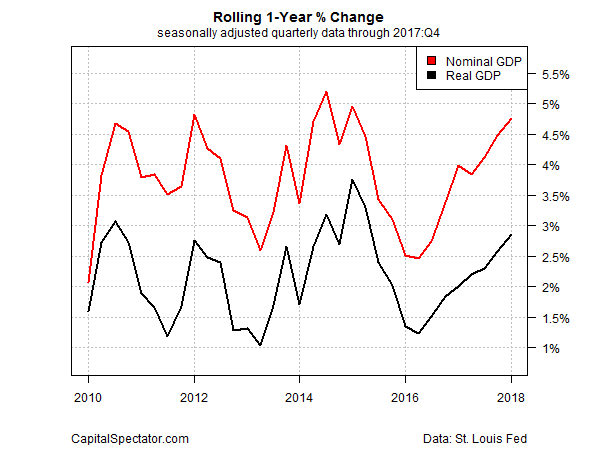A wobbly equity market, expectations for higher interest rates and weaker economic growth in the first quarter have inspired some pundits to claim that bear-market risk for stocks has spiked higher in recent weeks. Perhaps, but there’s still room for debate, based on a review of key indicators.
Let’s start with the economy. Last week’s preliminary GDP report for Q1 revealed a slowdown in growth. Output increased 2.3% during the January-through-March period, the government reported on Friday – the softest gain in a year. The deceleration could be a sign that the macro trend is weakening, although the dip might be another case of a Q1 soft patch that gives way to a rebound later in the year – a scenario that describes economic activity in recent years.
One reason for thinking that a repeat performance may be in the works: the year-over-year trend in GDP, in contrast with the quarterly data cited above, continued to accelerate in the first quarter. Real economic activity increased 2.9%, marking yet another improvement that lifted growth to its strongest pace in nearly three years. If the annual pace of output offers a more reliable signal for the economy by minimizing short-term noise, the latest GDP data offers a clue for expecting that the expansion will roll on at a healthy clip for the near term.

Yesterday’s ADP Employment Report offers positive data too. US companies hired 204,000 workers last month. The gain translates into a faster year-over-year trend: +1.9%, which is the strongest annual increase since September 2016. The upbeat news suggests that tomorrow’s payrolls update from the Labor Department will also deliver positive numbers. If so, the case will strengthen for expecting economic activity to perk up in the months ahead relative to Q1.

Meantime, a broad reading of economic numbers continues to show that recession risk is low. As reported in last month’s profile of the US business cycle,the odds that an NBER-defined downturn has started remain virtually nil through last month.













Leave A Comment